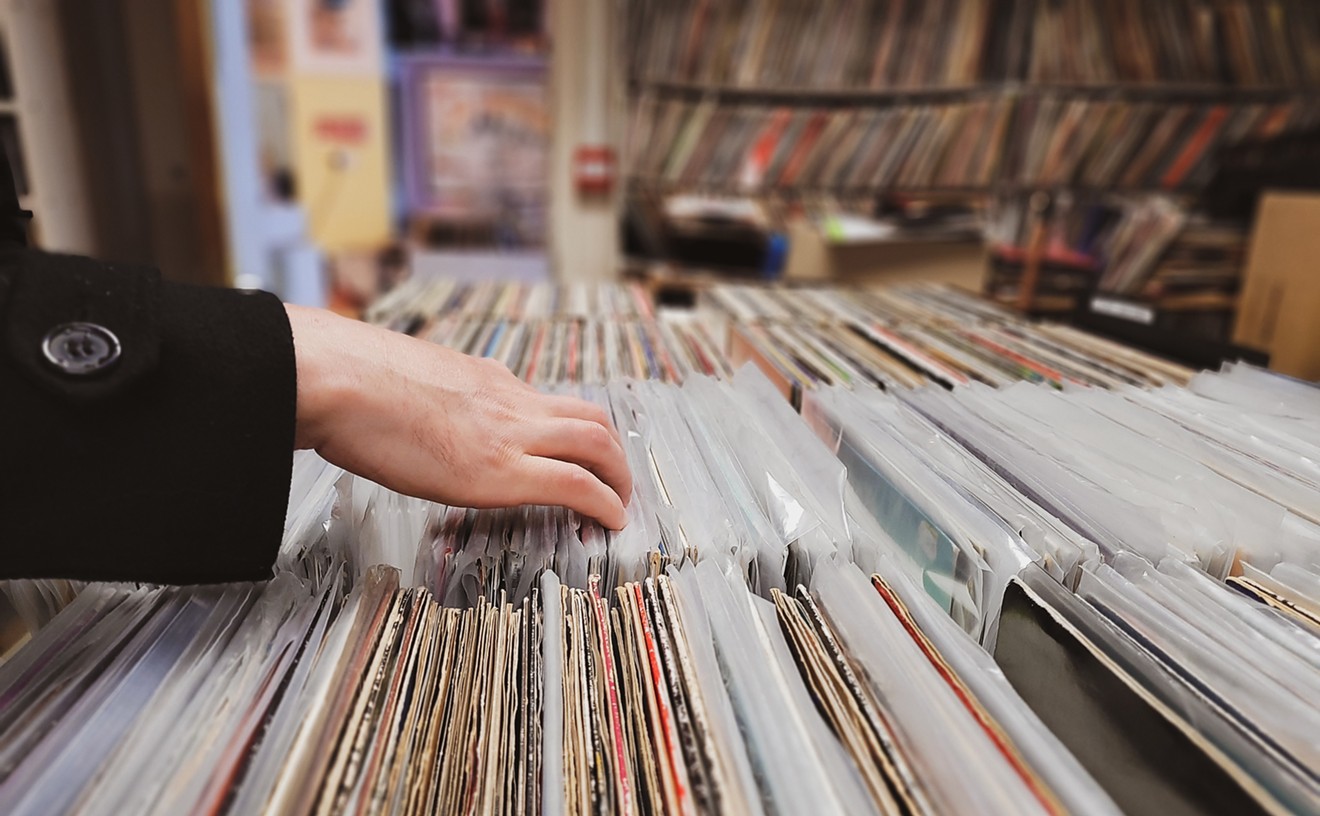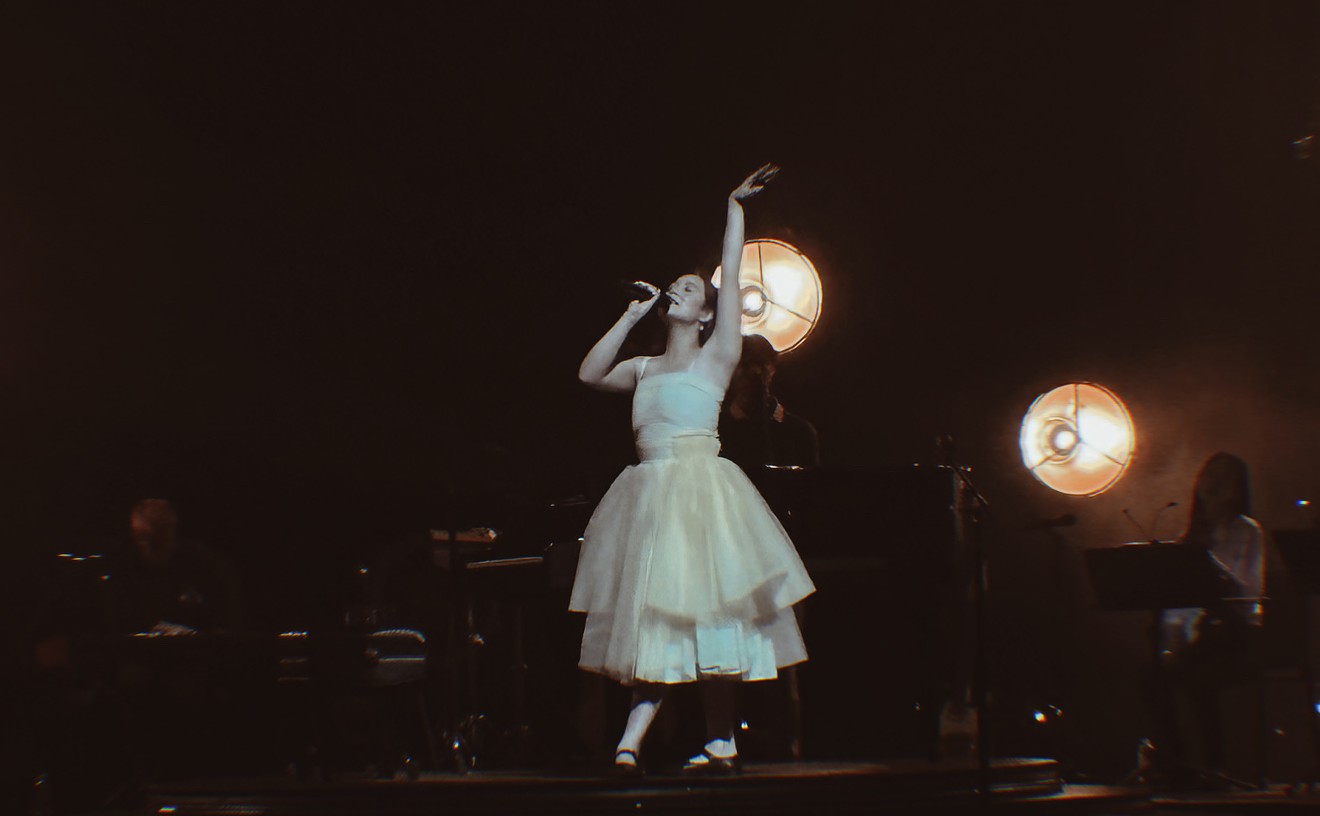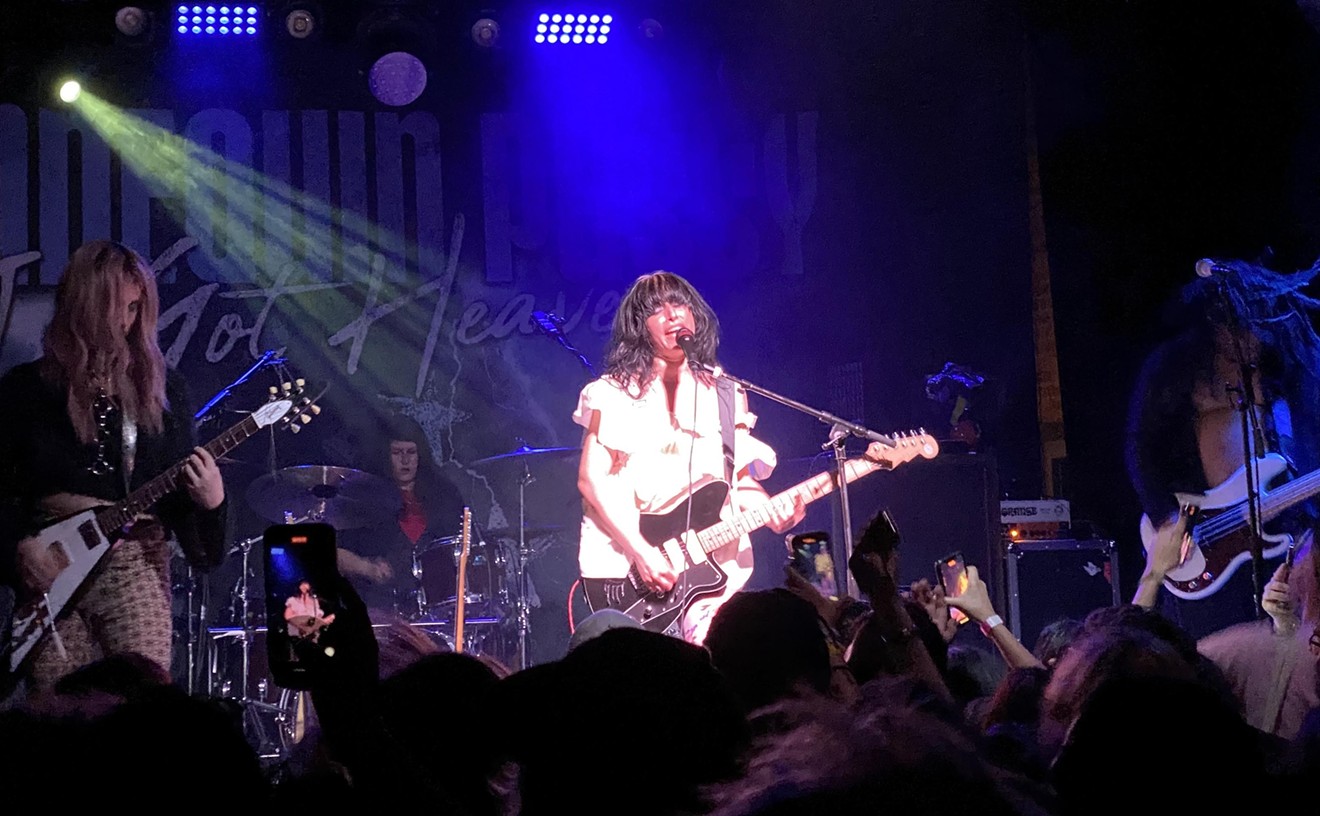Where last year's best music--like Stereolab's Mars Audiac Quintet, Johnny Cash's solemn American Recordings, and Neil Young's Sleeps With Angels--provided a balm from the emotional scorch of the day's events, this year's most popular music reeked of snake oil. The CD you just paid $16 for cost 53 cents to manufacture, with most of the difference going to things that have nothing to do with music at all. You can't see music, you can only watch it being played; but in its fervor to try to pinpoint the appeal, the industry has been so overrun by consultants and others trying to justify their salaries that the hottest music groups in the biz right now are focus groups with those all-important young demographics.
Safety and familiarity folded into the themes of recovery and survival in 1995, as rock and roll became less a gorgeous outsider fairy tale and more a reflection of a society that would rather hear the same story over and over again than be confused by varying accounts. Hootie and the Blowfish, the act that easily sold the most records in '95, became the champ because of their unification of such radio formats as "modern rock," "adult album alternative" (Triple-A), "rock," "contemporary hits," "adult contemporary," and even "classic rock." Just as musical regions have all merged together, losing their unique environmental personality, radio stations have perfected an interchangeable form of blandness, epitomized by the Bill-Withers-in-a-backwards-ball-cap sound of the band whose name is almost an anagram of "the Doobie Brothers."
The anti-Hootie backlash was the most fierce since Vanilla Ice flamboyantly reinforced his first name. It caused Hootie singer Darius Rucker to sarcastically "apologize for forcing y'all to buy our album" while accepting an MTV video award. Meanwhile, the public had made its own statement to a sputtering music biz: Give us something better or we'll keep buying Hootie.
The masses were fed a steady stream of "mall-ternative" music, made by the kids who bought Nirvana's Nevermind at the Record Town just four years earlier. Modern rock became the hot new radio format and, in tandem with MTV's narrowing playlist, made sudden radio stars out of such spankin' new one-word wonders as Sponge, Hum, and Bush. If Deep Blue Something's "Breakfast At Tiffany's" wasn't "The Pia Colada Song" of the '90s, then Alanis Morissette's "You Oughta Know" wasn't "You're So Vain" with fellatio.
1995 was the year when the slightest idea--the "yabba dabba dabba" chorus in Letters To Cleo's "Here and Now," the demonic repetition of "Do you wanna die?" in "Possum Kingdom" by The Toadies, the cuckoo background vocals on the Rentals' "Friends of P"--was enough to parlay into excessive airplay and brisk sales. Meanwhile, no-brainer Mariah Carey's use of the Tom Tom Club's oft-sampled "Genius of Love" on her latest smash, Fantasy, still sold in the millions.
Just as Charles Manson killed the hippie movement by showing that not every long-haired guy wearing love beads was truly into peace and love (some were horny psychos with a great line of bullshit), the grunge phenomenon was sucked away by youthful poseurs who would probably be playing ska if it was popular all over the world instead of just in Denton.
Of course, the biggest blow to the Seattle style was the 1994 death of Nirvana, who were the best rock and roll band in the world because they were the most honest. At least whiny and depressed junkie Kurt Cobain put his gun where his mouth was, bringing a thud to the truth. That he left his drug-possessed, self-addled wife to fill in the blanks was Cobain's final "gift" to a pop culture that had lied and told him money, fame, marriage, family, and toys would make him happy, while stigmatizing the only thing that could really do the trick.
Over in Belleville, Illinois, two longtime musical partners--who had once daydreamed together about having the careers that were now in their hands--were saying all the things they hadn't said before. Or maybe they weren't and needed to. At any rate, when Jay Farrar walked out that door, leaving Jeff Tweedy and his fellow band members in the lurch, he slammed shut Uncle Tupelo, the band that was both influential and promising when you usually can be only one or the other. For Farrar to quit a group that had worked so hard for so long to get where they'd gotten was sort of like going all the way through training camp and pre-season and then quitting the team right before the big game.
The breakup of a band doesn't compare to the Cobain tragedy, but news of both incidents were shocking, as is the idea that the two best records of 1995 would come, so soon, from the ashes of Nirvana and Uncle Tupelo. The year's only two truly great albums, with a beginning and an end and a middle part that takes you from one to the other, are Trace by Farrar's Son Volt and the eponymous debut from Nirvana drummer Dave Grohl's Foo Fighters.
Sonically and musically, there's not much in common between the two solo acts posing as bands. Son Volt rides the open road where broken-down Gram Parsons and Neil Young are picked up by a trucker who only asks where they're heading before turning up the Lefty Frizzell tape. Foo Fighters, on the other hand, are an aggressive pop tangle of arms and legs belonging to Brian Wilson, Cheap Trick and, yes, Nirvana. The real commonality is music with the power to make a personal connection, so it doesn't need all that other rock-star crap.
In these days of success of "Hard Copy" and similar infotainment, the public has shown that it wants to--needs to--know about its favorite celebrities; but both Grohl and Farrar have seemingly gone out of their way to be as unintriguing as possible, with a Farrar interview akin to a talk-show host trying to loosen up a spooked 4-year-old. With trust constantly battling media paranoia, motive has become a big question mark, and both Trace and Foo Fighters sound absolutely pure--like they just had to be made.
It is said that after a head's been shaved clean, the hair on it grows back thicker. That's what happened here with Farrar and Grohl: They have started over, going deeper than the surface to see what they have. Trace and Foo Fighters sprang from trying emotional times, the birthplace of many records, but they show only the scars, never the wounds.
The best of the rest of 1995
3. (What's the Story) Morning Glory, Oasis (Epic). Singer Liam Gallagher resides in the same "in-the-pocket" region as Frank Sinatra and Johnny Rotten, plus brother Noel writes great melodies.
4. To Bring You My Love, PJ Harvey (Island). The very thing that so charmed me about this LP in the beginning--it flip-flopped blues dynamics by being more about the tension and less about the release--is what ultimately kept this from holding up as the masterpiece it initially sounded like. It's a little boring.
5. Maxinquaye, Tricky (Island). Hard samples and tricked-out rapping remind me more of the first Public Enemy album than the rest of the "trip-hop" acts with whom Tricky is often lumped. Just when you thought you had heard it all when it comes to rap and dance music, this record repaved the street.
6. Friday Afternoon In the Universe, Medeski Martin and Wood (Rykodisc). Cocktail-lounge jazz with a sinister touch. There are jazz cats who can play circles around this trio, but few can get to the guts of the groove quicker and more thoroughly.
7. It's Great When You're Straight...Yeah, Black Grape (Radioactive). Goofy, groovy, druggy funk from Shaun Ryder, the former singer of the Happy Mondays, and a cast of like-minded crazies.
8. Ghost of Tom Joad, Bruce Springsteen (Columbia). OK, so it turns out that there are only three great songs: To paraphrase one of the album's non-great numbers, Springsteen's mediocre is always good enough.
9. Terence Trent D'Arby's Vibrator, Terence Trent D'Arby (Work/Sony). The hard-rock numbers have got to go--TTD is no Hendrix reincarnation--but the ballads and funky numbers are amazingly good.
10. Mellon Collie and the Infinite Sadness, Smashing Pumpkins (Virgin). Two hours of Billy Corgan's high-pitched voice has caused this LP to be the first stickered by human-rights organizations, but there are enough good songs here (especially "1979") to make you warm to the whine. Plus, you've gotta give credit to the stones Corgan carries around in his nut-sack.










